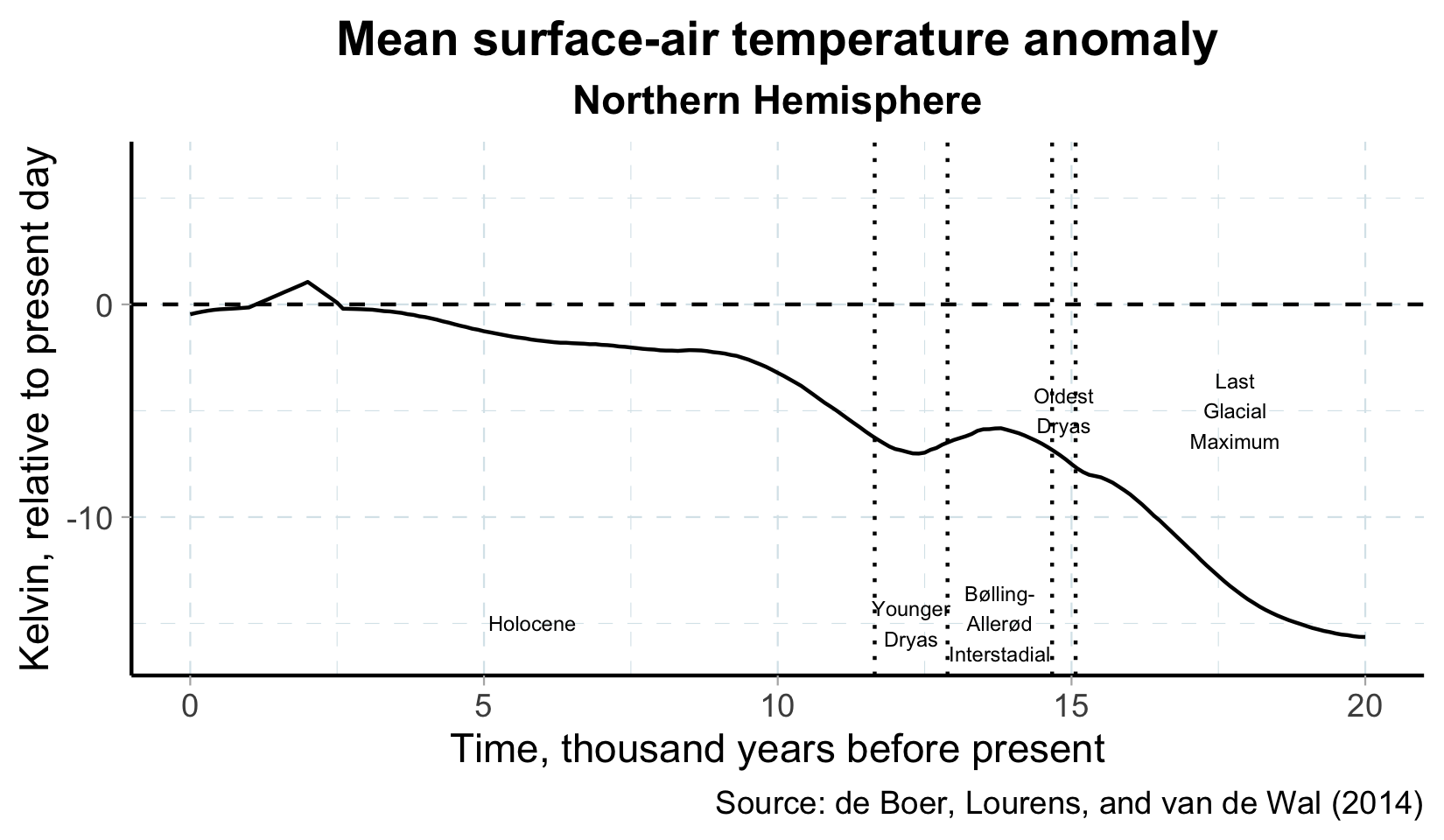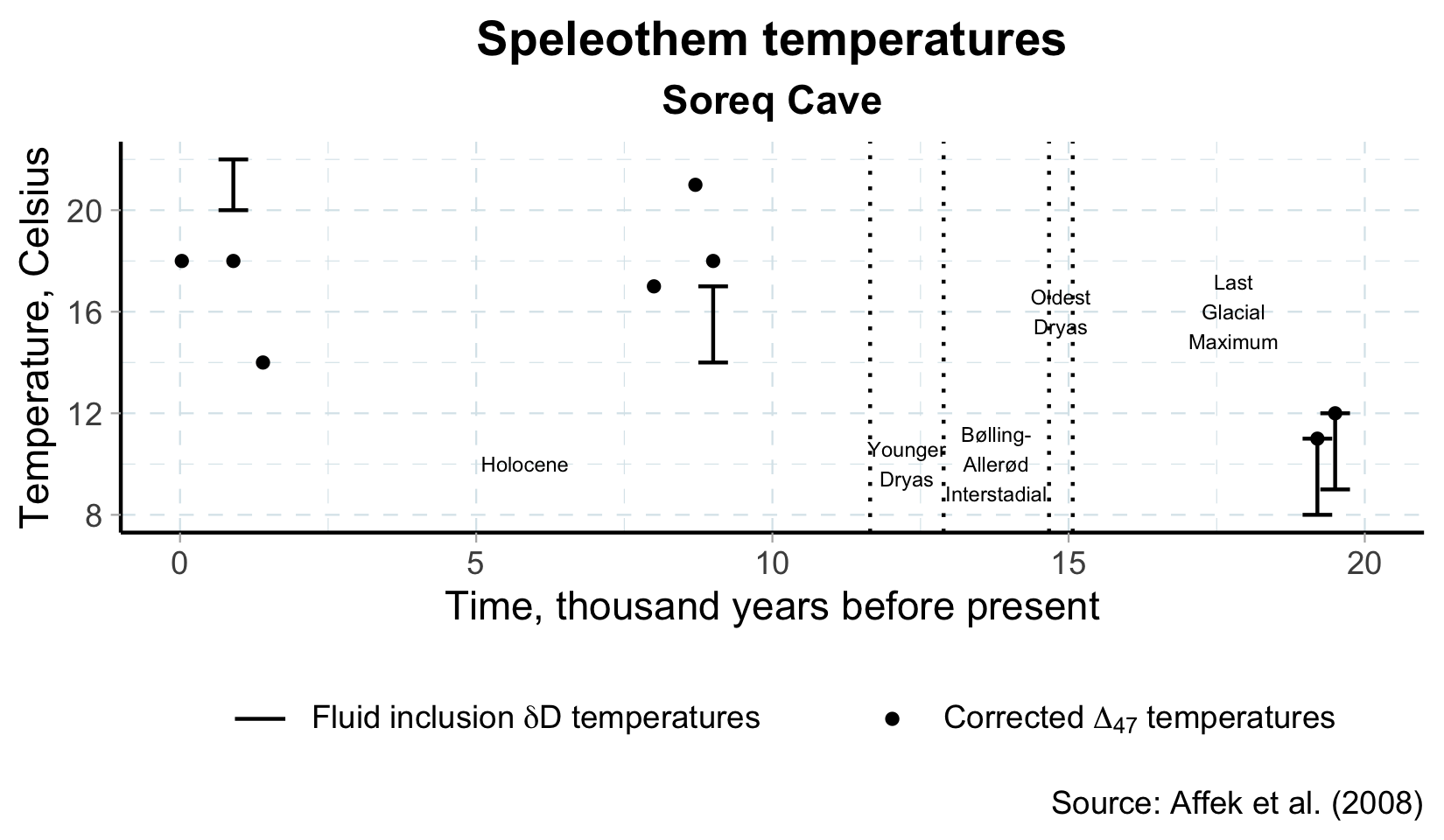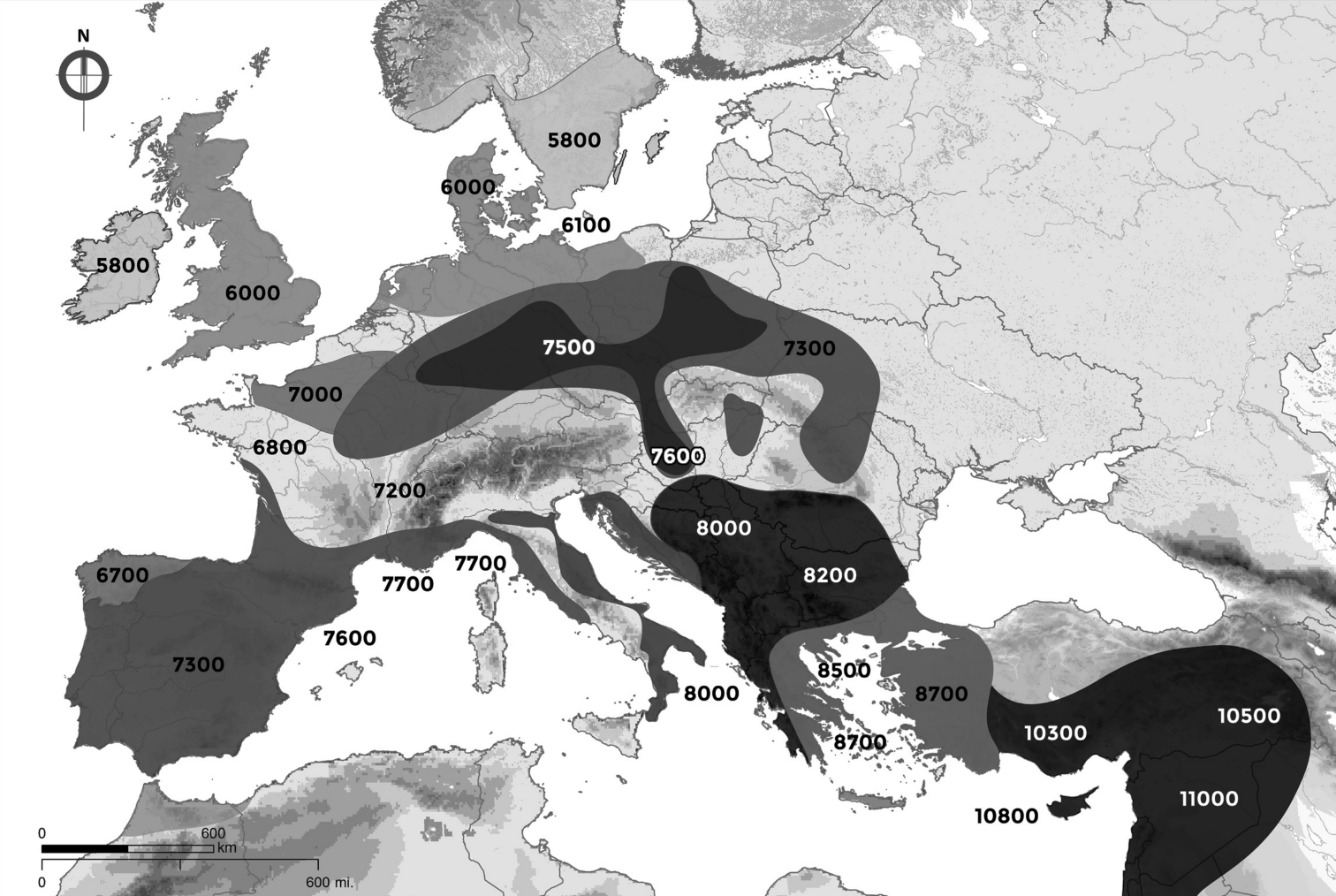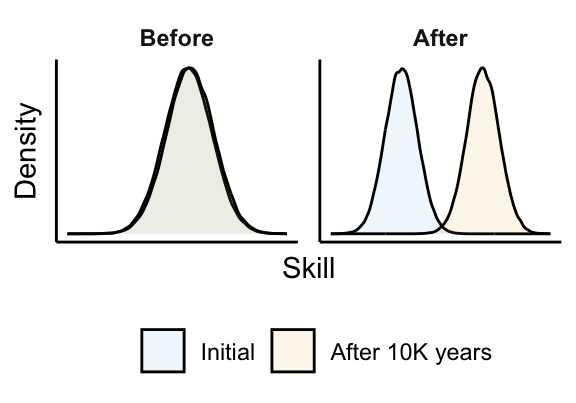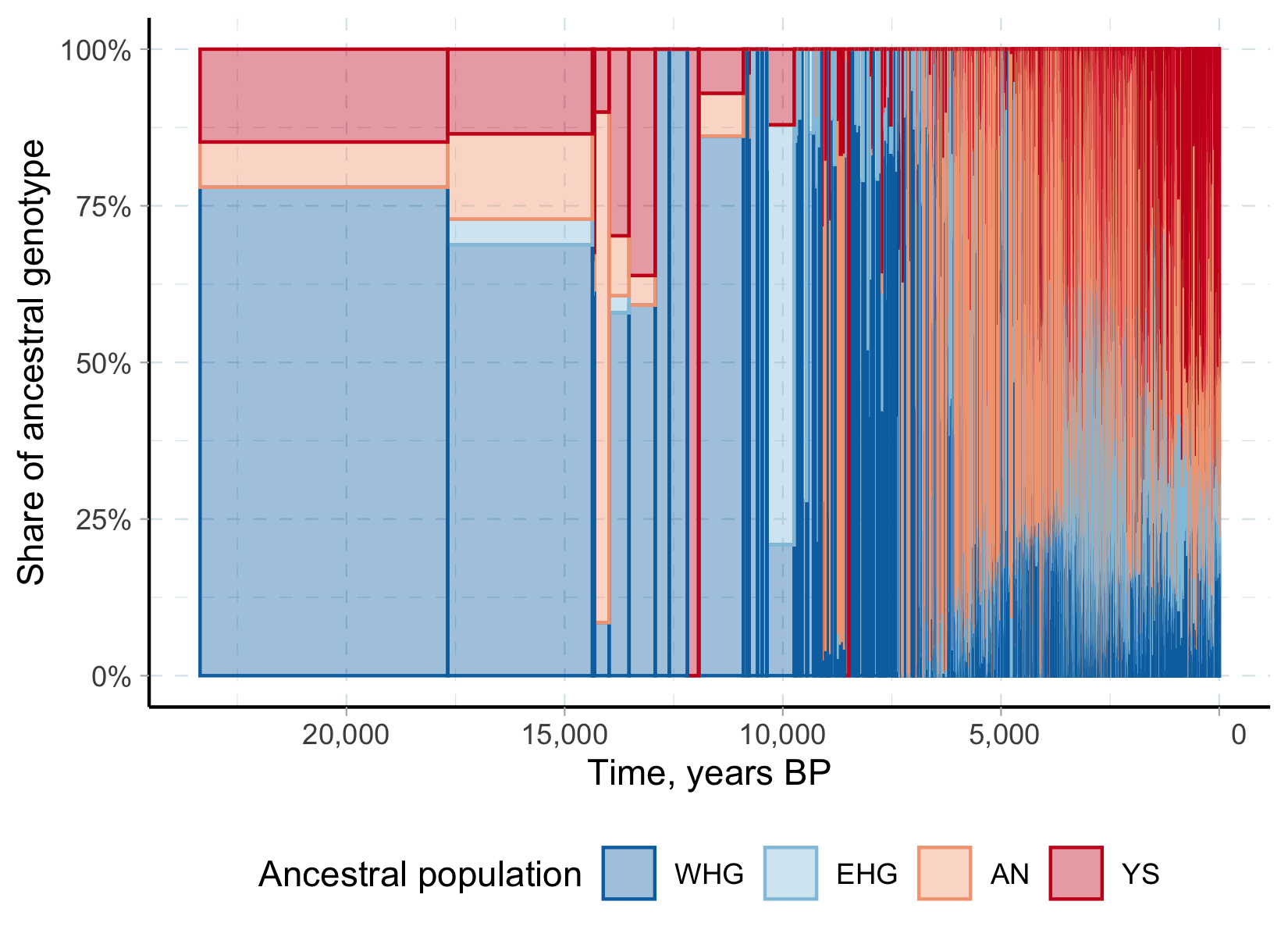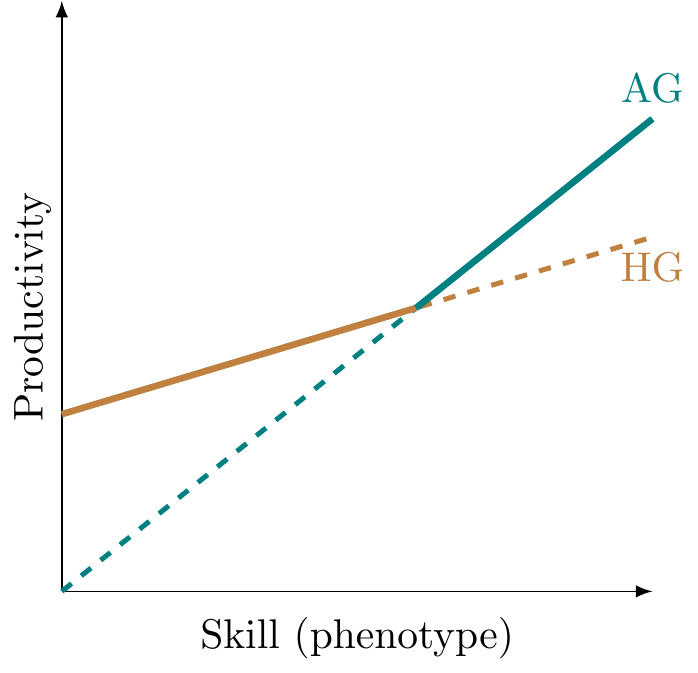
Selection and the Roy Model in the Neolithic Transition
Introduction
Technological and climate shift
direct effect: incentives and decisions
indirect effect: population distribution
This paper
Climate shift and adoption of agriculture over the past 14,000 years
Link selection to economic activity choice (farming vs foraging)
Evolution in population distribution
Impact: current choices depend on actions of past generations
Contributions
Polygenic selection: Berg and Coop (2014); Racimo, Berg, and Pickrell (2018); Guo, Yang, and Visscher (2018); Cox et al. (2019); S. Mathieson and Mathieson (2018); Uricchio (2020); I. Mathieson (2021); Song et al. (2021); Stern et al. (2021); Yair and Coop (2022)
Link to economic model of activity choice
Economics of farming spread: Bowles (2011); Bowles and Choi (2013); Robson (2010); Rowthorn (2011); Rowthorn and Seabright (2010)
Emphasise the role of genotype distribution
Climate and agriculture
Holocene (\(\approx\) 11,000 years ago - present)
Agriculture
- begins to spread \(\approx\) 11,000 years ago
- higher marginal productivity thanks to climate change
- evolutionary advantages: higher fertility, lower mortality (Shennan 2018)
Selection of farming-friendly genotypes
Model of genotype evolution
Based on Wright-Fisher model
- finite, constant population \(N\)
- \(K\) causal loci
- unit of analysis - haplotype pairs \(\mathbf{H} = (l, r) = \left(\{0, 1\}^K, \{0, 1\}^K\right)\)
- mutation, recombination, selection
Selection and technology
- \(z(g)\) is a polygenic score
\[ z(g) = \sum_{k = 1}^K \beta(k) g(k) \] - two technologies: HG - foraging and AG - farming
- technology-specific fitness function
\[f(z, \tau) = R_\tau \exp\left(\omega_\tau z\right), \forall \tau \in \{HG, AG\}\] - fitness-maximising technology choice: \(\hat{f}(z) \equiv \max_\tau f(z, \tau)\)
Technology choice
Roy model
. . .
Adapted to fitness
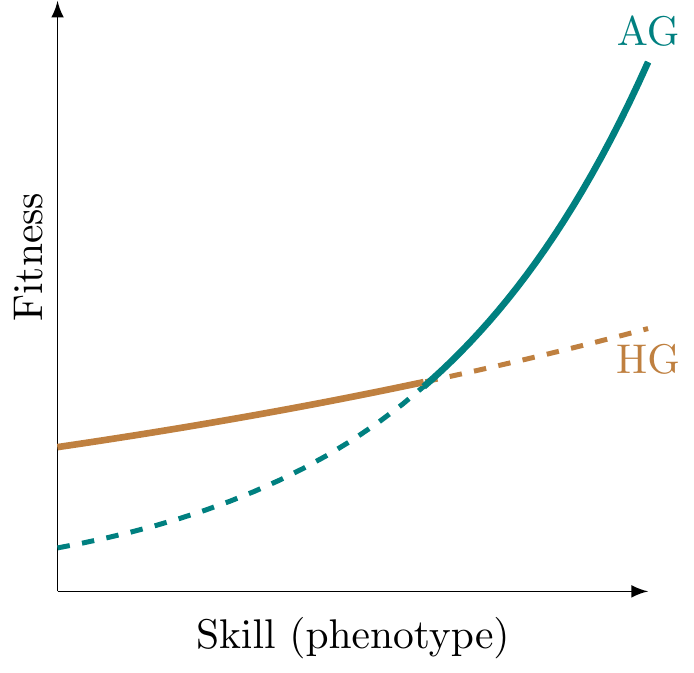
Data
Genotypes
GWAS estimates
- Educational attainment (Lee et al. 2018)
Descriptive evidence
Education PGS in aDNA
Edge and Coop (2019) Waiting-time estimator

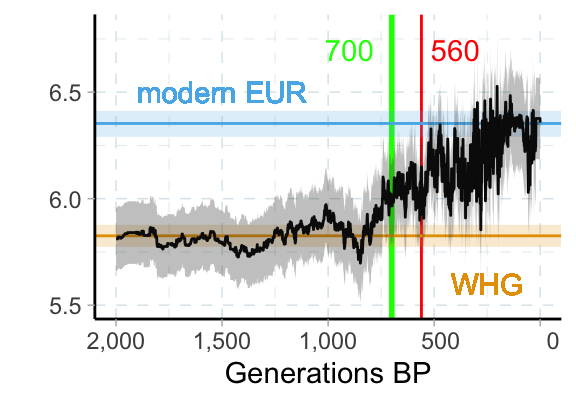
Estimation
Parameter of interest: technology-specific selection gradient \(\omega_\tau\)
- Assume distribution before climate shift is at steady state: \(\omega_{HG} = 0\)
- Estimate \(\omega_{AG}\) by maximising simulated likelihood
Draw initial haplotype matrix consistent with allele frequencies in WHG
Simulate independent histories from the model over \(T\) generations
Compute simulated likelihood of phenotypes in modern EUR
Results
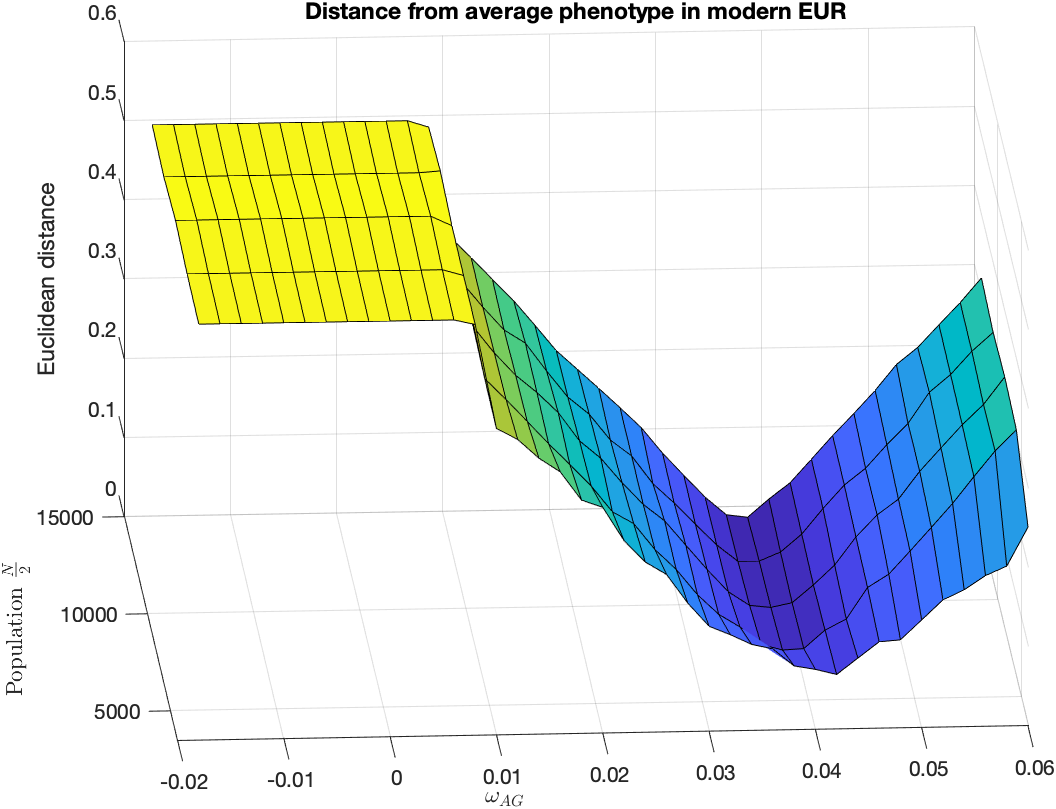
Results
Full sample
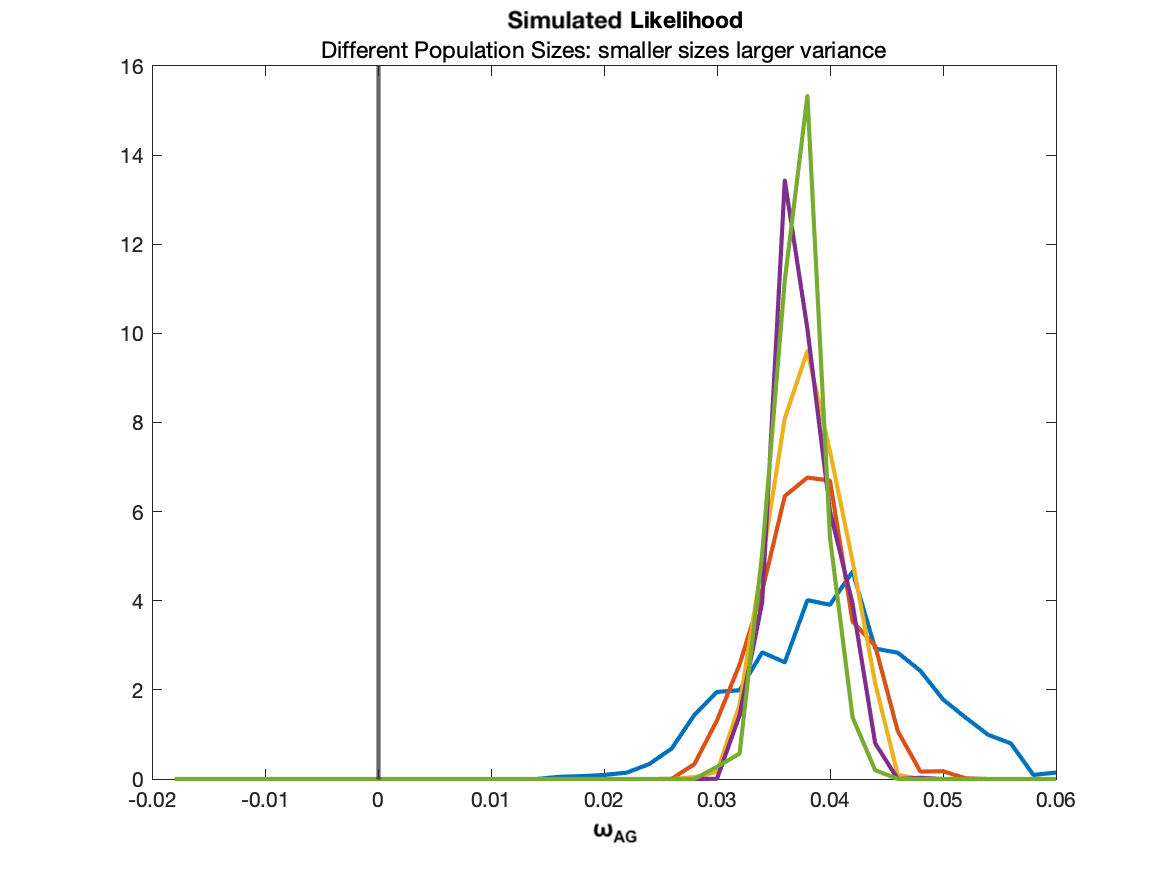
. . .
Truncated sample
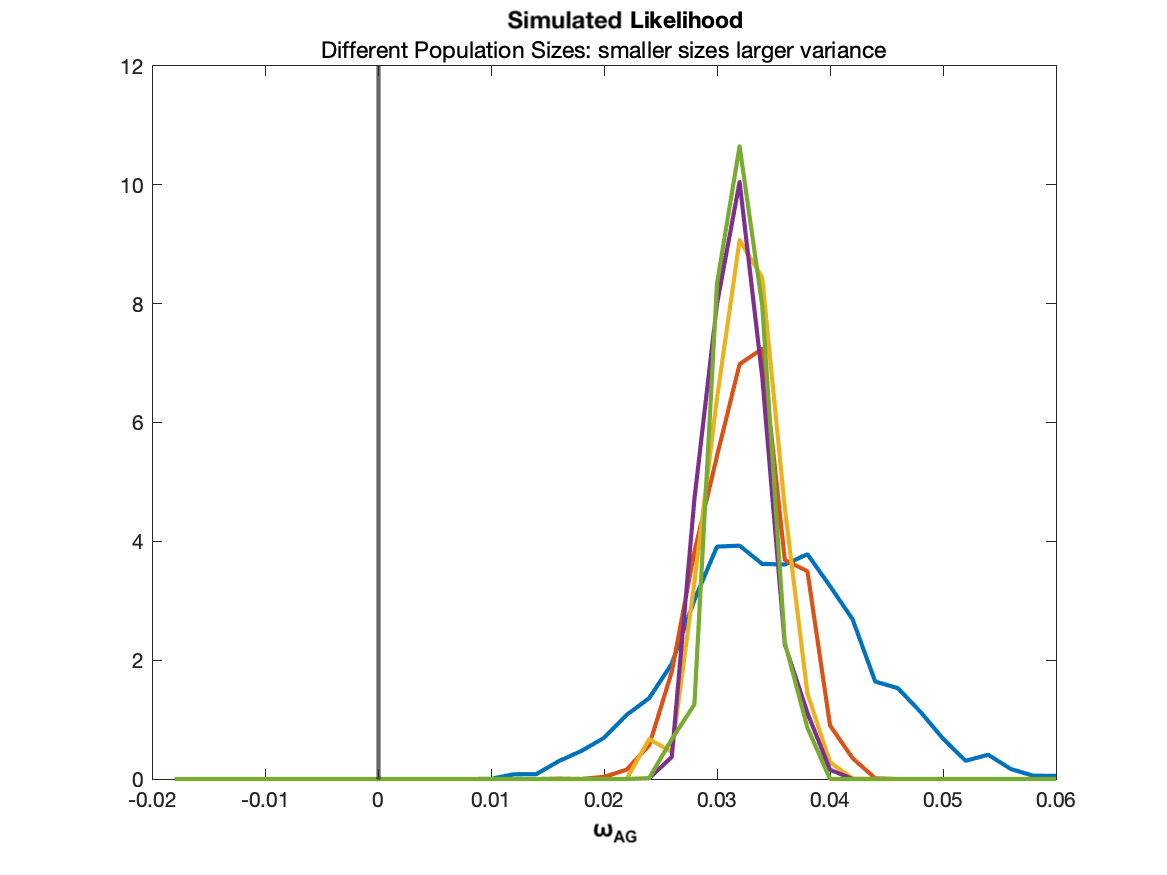
Conclusion
- Study genetic evolution in European populations over the last 14,000 years
- Extend Wright-Fisher model with activity choice in the spirit of Roy model
- Estimate using ancient and modern genotypes
Future extensions:
- Migration
- Estimation with path
